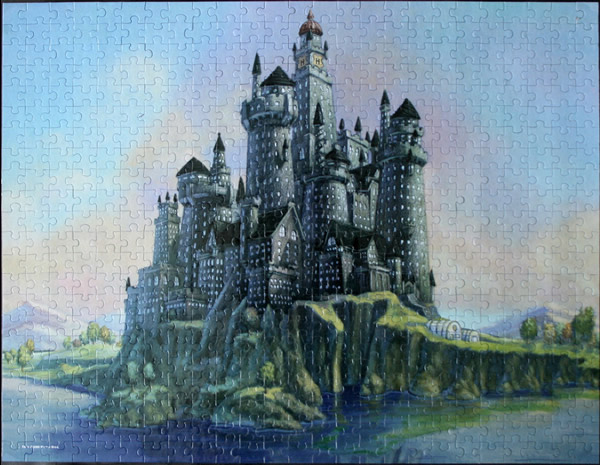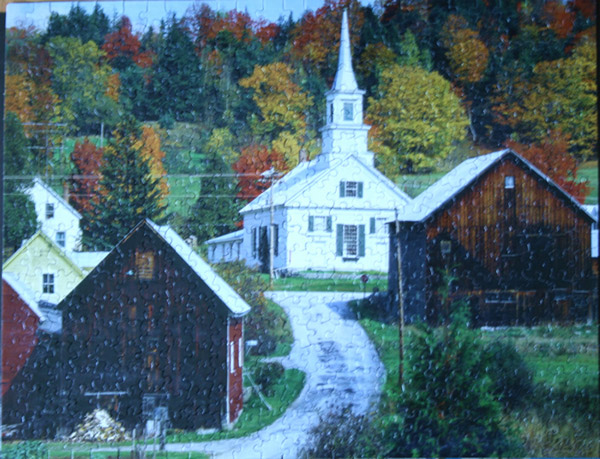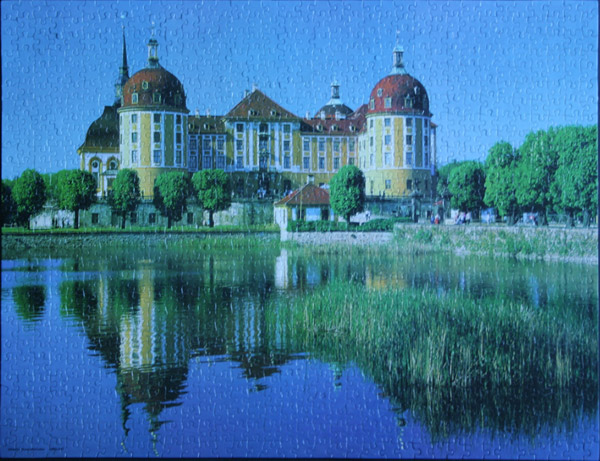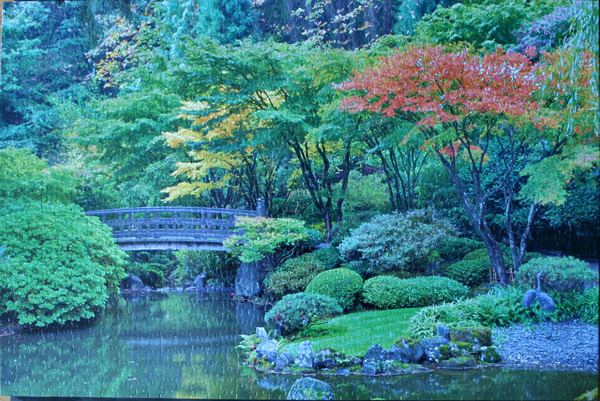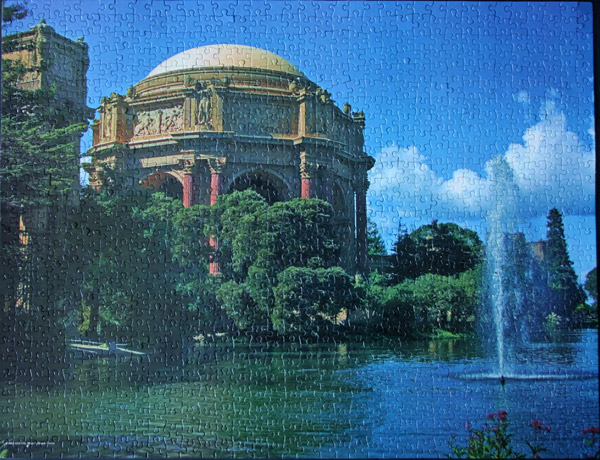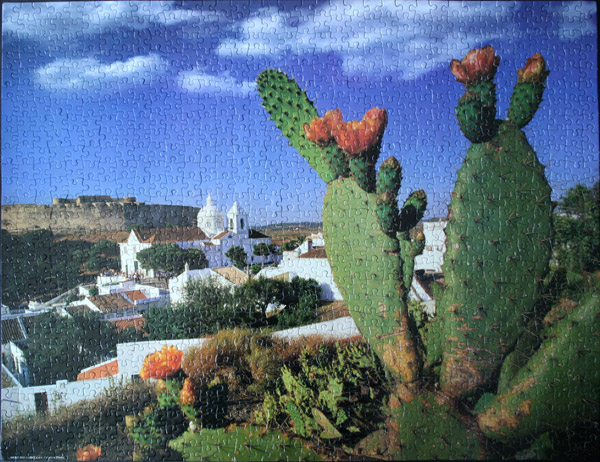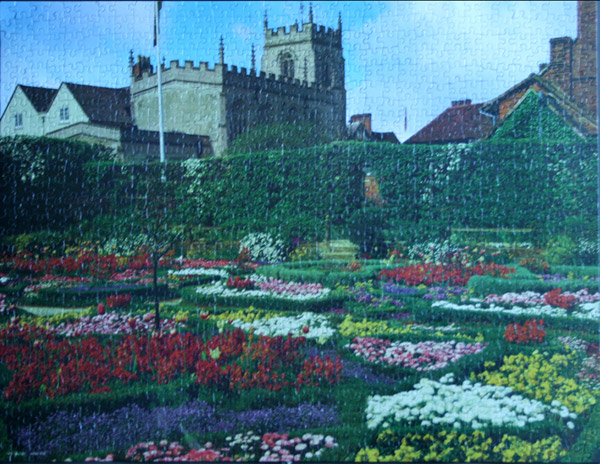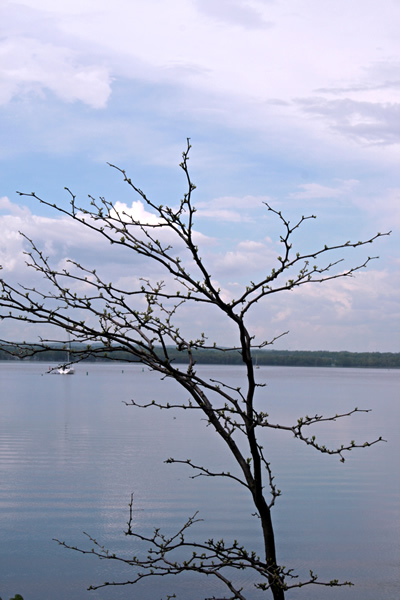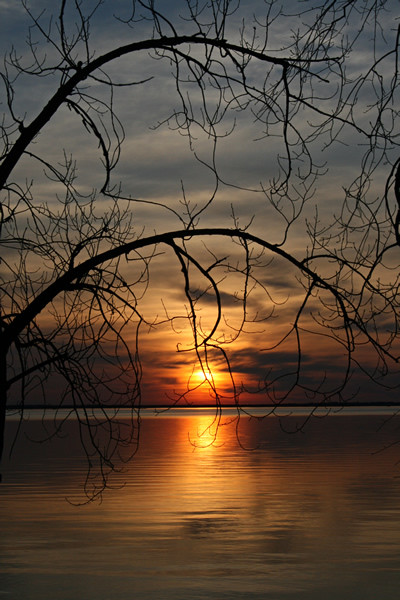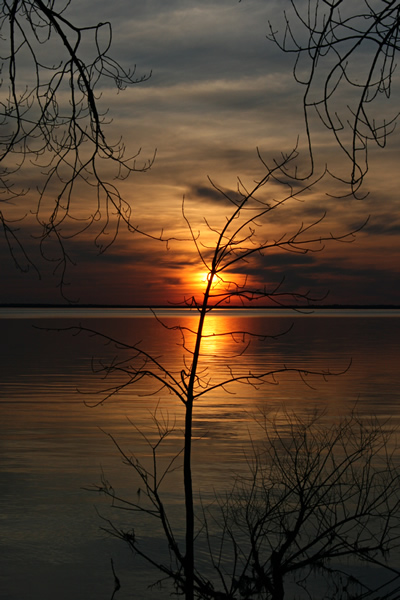
Size: 500 pieces
Dimensions: 48.26 cm x 35.56 cm
Producer: The Canadian Group, Sure-Lox, Churches and Cathedral series
Notes: Bourges Cathedral (Cathedrale Saint-Etienne de Bourges) is a cathedral, dedicated to Saint Stephen, located in Bourges, France. It is the seat of the Archbishop of Bourges.
It is based on the Notre-Dame in Paris but with significant differences in design. The cathedral is noted for its unique feats of architecture, impressive sculptures and thirteenth-century stained glass windows.
Bourges Cathedral has a highly unique floor plan. It has no transepts, which form the cross-shape of most churches. This lends the cathedral a unique appearance inside and out. On the exterior, thick walls and a myriad of flying buttresses support the unbroken weight of the long nave (122m).
Bourges Cathedral retains almost all its original ambulatory glass (apart from the axial chapel), dating from about 1215. The iconography used in many of these windows uses typology (such as Old Testament episodes prefiguring events in the life of Christ) and symbolism (such as the pelican who pecks her breast to feed her young on her own blood and the lioness who licks the malformed cub into shape) to communicate theological messages. Other windows show the parables of the Good Samaritan and the Prodigal Son, the story of Dives and Lazarus, and the Apocalypse. [Wiki]






